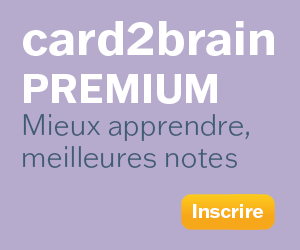Decision Making at Work
Seminar Uni Würzburg
Seminar Uni Würzburg
Fichier Détails
| Cartes-fiches | 58 |
|---|---|
| Langue | Deutsch |
| Catégorie | Psychologie |
| Niveau | Université |
| Crée / Actualisé | 12.07.2020 / 22.06.2023 |
| Attribution de licence | Non précisé |
| Lien de web |
https://card2brain.ch/box/20200712_decision_making_at_work
|
| Intégrer |
<iframe src="https://card2brain.ch/box/20200712_decision_making_at_work/embed" width="780" height="150" scrolling="no" frameborder="0"></iframe>
|
How is Nudging defined and which processes does it target?
Nudging can be defined as any aspect of the choice architecture that alters people’s behavior in a predictable way, without forbidding any options or significantly changing their economic incentives. A nudge should be easy and cheap to avoid and should not involve a restriction.
There are two different system processes. System 1 processes are unconscious, automatic, rapid and high in capacity, while system 2 processes are conscious, slow and deliberative. The goal for nudging is to target the system 1 processes, since intentions are easier to be translated into behavior being processed in this system.
Which are the three groups of nudges proposed by Hollands et al. (2013)? Give an example!
The three groups of nudges proposed by Hollands and colleagues are altering properties (labelling, sizing, functional design), altering placement (availability, proximity) or altering both (priming and combined nudging).
One example for placement would be placing healthier food on easily reachable shelfs in the supermarket to promote healthy eating, while putting unhealthy foods in the lowest or highest shelfs.
Give two examples of possible interventions focusing on sustainable consumption decisions!
One example for nudging people in the direction of sustainable consumption decisions is the "choose your favourite football player" box system in London, aiming at reducing cigarette litter in the streets. People can vote for their favourite player (player A vs. B) by putting the used cigarette end in the respective box. That way, the streets are less dirty and people are nudged towards less littering. This method focuses on altering properties and placement.
Another example would be smaller plates for reducing food waste at buffets, which would fall under the category of altering properties. If the plates provided for the buffet guests are smaller, people do not tend to overload their plates with food that they will probably not finished and which will be thrown away. With smaller plates, such waste can be reduced.
(Prompts, Social modelling, Cognitive dissonance (e.g. foot in the door technique), goal-setting)
Describe the differences between an independent and interdependent self-concept. How does this distinction relate to Individualism/Collectivism?
Independent individuals will put their own features and goals in the centre of their attention. Interdependent individuals will set their focus on their social context and pursue collective goals, before focussing on personal goals.
In individualistic cultures, independence is valued higher, therefore it is more likely, that this norm is internalized, whereas in collectivist culture interdependence plays a more important role and is more likely to be internalized.
In which groups can the CDMP scale be split in? Name two dimensions of each group
The CDMP (=career decision-making profile) scale can be structured into three groups: self-oriented strategies, such as aspiration for an ideal occupation or internal locus of control, other-oriented strategies, such as the desire to please others or dependence on others, and information processing strategies, such as information gathering and speed of making the final decision.
- Self-oriented strategies (aspiration for an ideal occupation, internal locus of control, effort invested)
- Other-oriented strategies (Consulting with others, Desire to please others, Willingness to compromise, Dependence on others, Procrastination)
- Information-processing strategies (Information gathering, Information processing, Speed of making the final decision)
Which of the groups analyzed by Guan et al. (2015) scores higher on aspiration for an ideal occupation, internal locus of control and effort invested?
The American participants
What are the personality traits that Allen et al. (2005) found to moderate the relationship between turnover intentions and turnover behavior?
The personality traits moderating the relationship between turnover intentions and turnover behavior are for one self-monitoring or self-intention, which strengthen turnover intentions and -behavior when they are higher in individuals. Secondly, an internal locus of control seems to strengthen turnover intentions, but findings were a bit inconsistent on this point. Finally, risk-averse individuals have a stronger relationship between turnover intentions and turnover behavior.
How can the turnover process be described best according to the findings of Rubenstein et al. (2015)?
The "exit route" described by Rubenstein's findings starts with antecedents triggering withdrawal cognitions which in turn lead to the actual turnover or retirement.





